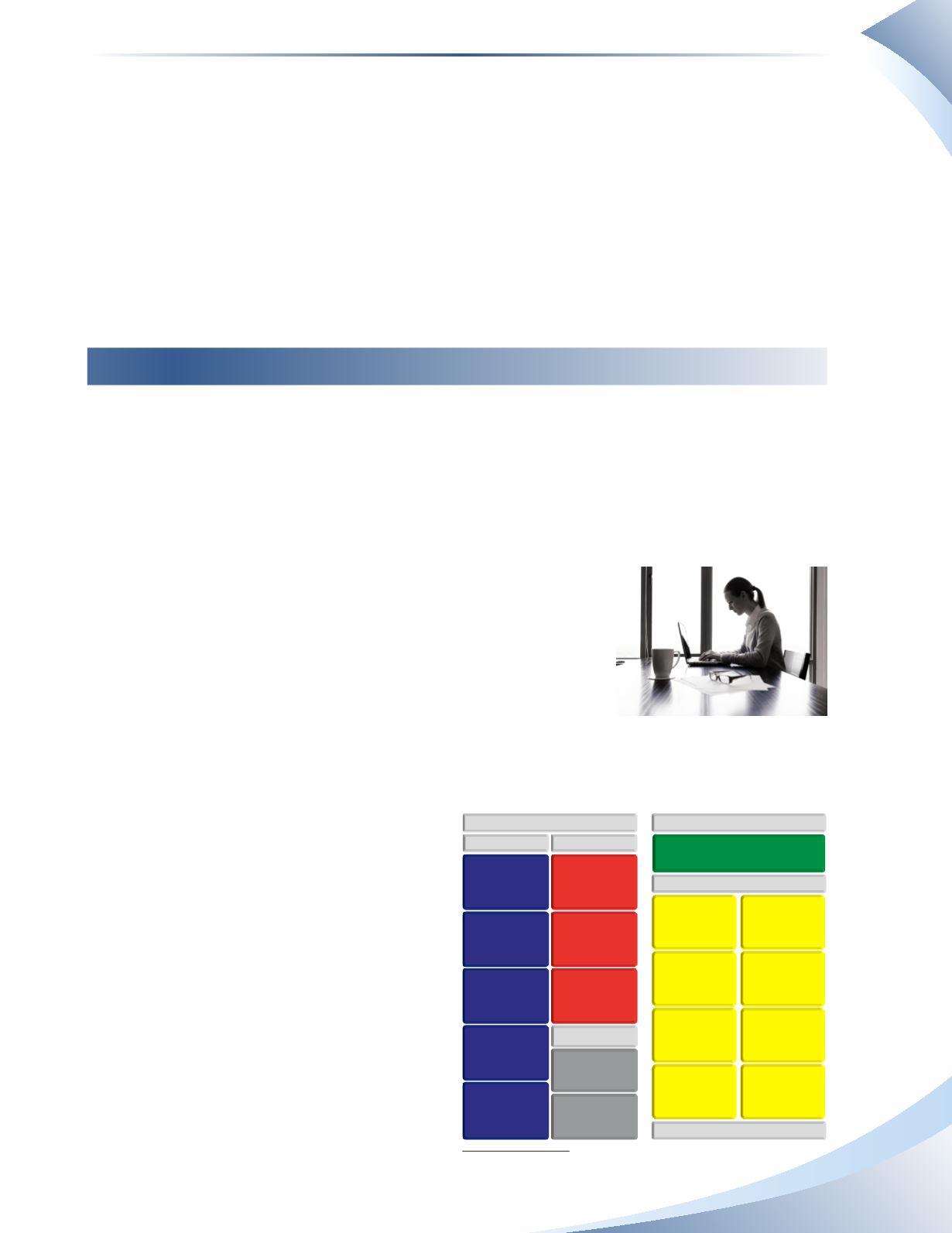
Chapter 3
The Accounting Framework
59
accounting professionals across the country to more easily understand each other. The unification
better serves the public under a strong and globalized brand of one Canadian accounting profession.
Obtaining a CPA designation requires successful completion of the CPA Professional Education
Program, a final evaluation exam and the required practical experience.
Accountants may work for a single organization, or they may work in a firm which provides
accounting services for many other organizations or individuals.Typical functions that accountants
perform include financial statement preparation, tax return preparation, auditing, and consulting.
Forms of Business Organization
So far we have dealt with accounting for sole proprietorships. However, a business could be orga-
nized as a partnership, corporation, or a not-for-profit organization.The form of organization is
important because that determines the laws and accounting standards that must be adhered to.
Each form of organization is discussed in detail below.
Sole Proprietorship
A
sole proprietorship
is owned and generally operated by one
owner. A proprietorship is usually a small business, and could
provide services such as bookkeeping, gardening, painting or
general contracting. Many proprietorships have only a small
amount of money invested by the owner. Starting a proprietorship
can be an easy process; often it is enough to register a business
name and obtain a business licence.The proprietorship will last as
long as the owner wishes to run the business, or as long as the owner is alive. Sole proprietorships
are examples of private enterprises because ownership of the business is restricted to one person.
A
private enterprise
is any business or organization in which ownership is restricted to a select
group of people. In other words, the general
public does not have the ability to acquire
ownership of the business.
From an accounting perspective, the finan-
cial affairs of the business must be separate
from the financial affairs of the owner. For
example, the proprietor cannot list personal
assets such as the contents of her home on
the same statement as the business’ assets.
From a legal perspective, however, a sole
proprietorship is
not
a separate entity from
its owner. This means that the assets and
liabilities of the business legally belong to
the owner, even though the financial activi-
FIGURE 3.1
INCOME STATEMENT
NET INCOME (LOSS)
EXPENSES
2
ASSETS
BALANCE SHEET
LIABILITIES
CASH
ACCOUNTS
RECEIVABLE
PROPERTY, PLANT
& EQUIPMENT
PREPAID
EXPENSES
OFFICE
SUPPLIES
ACCOUNTS
PAYABLE
UNEARNED
REVENUE
LOANS
PAYABLE
REVENUE
OWNER’S EQUITY
OWNER’S
CAPITAL
OWNER’S
DRAWINGS
TRAVEL
INSURANCE
DEPRECIATION
INTEREST
MAINTENANCE
SALARIES
RENT
UTILITIES


